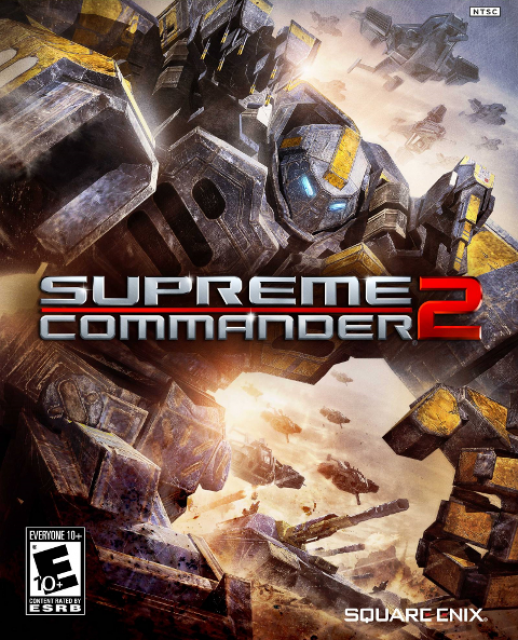Still Reigns Supreme!
In an age where real-time strategy games are trending toward a smaller scale with a greater focus on tactical control of fewer
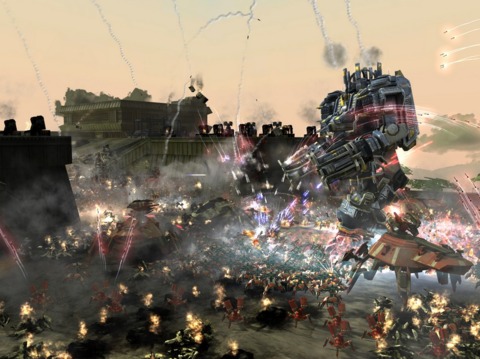
units the Supreme Commander franchise stands as a bastion of massive battles, epic struggles, and climactic showdowns. It’s not hard to understand why the Supreme Commander games appear to revel in their size given that they are the spiritual successors to Total Annihilation; a 90’s RTS series with a strong bent toward substantial conflict. However, Supreme Commander 2 makes significant addition and omission to the formula, streamlining its predecessor’s overly complex mechanisms whilst retaining its scale and gratifying destructiveness. While many hardcore SupCom fans may cry foul over some simplifications the changes developer Gas Powered Games has implemented create a more accessible experience which still contains immense depth.

Supreme Commander 2 could quite accurately be described as a classically styled RTS, every match involves building a base, producing resources, researching improvements to existing units while unlocking new ones, and finally constructing an army to send forth and destroy an opponent. Supreme Commander 2’s hook is its grand scale, unique unit design and distinct factions. The SupCom 2 universe is home to three nations: the United Earth Federation, Illuminate, and Cybran; each with its own tech tree, experimental units and style. The United Earth Federation (UEF) is the militaristic human faction backed up by strong artillery; Cybrans are cyborgs with a powerful navy, and the Illuminate are religious alien-worshipers who can use teleportation. Unlike the prior game, factions now have units which lack direct counterparts on other rosters, adding to the distinct feel of each race and incentivizing experimentation to find the one which best suits your preference. Returning fans should also note that many units and structures present in the first game have either been eliminated or radically changed, so don’t expect every old strategy to work like it did.
The changes to units and faction identity are relatively minor when compared to the two major refinements offered by Supreme Commander 2, the overhauling of both resource and research. The inaugural SupCom game had an interesting resource management system in which the cost of producing a building or unit was subtracted from the overall economic output of resources (mass from extractors and power from generators) and a bonus was granted when structures were adjacent. In this system economies could “go into the red” when they were using more resources than they produced. Though flexible and unique this model was deemed too complex and detracted from the strategy because players spent more time managing their economy than waging war. The sequel completely disposes of the old structure in favour of a more conventional resource management system. All the materials produced are stored until needed and construction cannot commence if sufficient mass and energy are not available. In addition to these series staples, Supreme Commander 2 includes a new resource; research points, used to climb the redesigned tech tree. The depth that once existed in SupCom’s resource management has been largely abolished, but it makes way for faster paced gameplay.
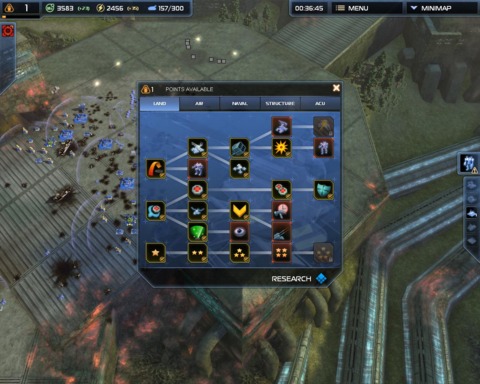
Though the simplification of the resource gathering process may annoy series fans it is more than replaced in complexity and variability by the new tech advancement structure. Supreme Commander was filled with low tier units which served little purpose beyond the early stages of a match. Generally, players rushed to reach higher tech levels and ignored simpler units. The new tech tree alleviates this problem by allowing players to unlock improvements and new units by spending research points generated at scientific stations. Unlocks are divided into land, air, naval, structure, and Armoured Command Unit categories which contain multiple paths. Instead of unlocking a new tank which renders the prior one obsolete the player can choose to increase the tank’s damage or augment it with an antiaircraft gun. Thus, units remain viable from the beginning of the game clear through to the end. Experimentals, the massive units designed to smash armies and break stalemates, are among the last things to be researched and must now be built in experimental factories, making their early deployment less likely. In Supreme Commander 2 managing the tech tree replaces managing the economy and the multiple paths for upgrading allow for a limitless variation on build order.
With so much to do in a match it would be easy for the game to swamp new players, but the accessibility of the controls demonstrates why a mouse is so useful in strategy titles. The myriad actions required to set up a base and manage an army can be accomplished quickly using that helpful rodent with additional control available in the form of keyboard hotkeys, though these are only really useful to experienced players. Manoeuvring units and creating control groups is as simple as ever, but minor pathing issues exist which can prevent units from moving or send them endlessly ping-ponging between two obstructions. Given the developers touting of an improved unit A.I. these glitches are particularly disappointing. Another notable change is the HUD’s redesign to take up less screen space while displaying more vital information. The control and interface of SupCom 2 equals the best games of the genre.
Sadly, the campaign of Supreme Commander 2 falls exceedingly short in its story; which fails to reach the basic but engaging
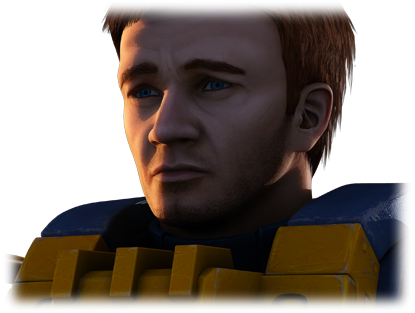
level of the first. Set 25 years after the events of the Forged Alliance expansion for Supreme Commander the single-player portion is divided into three sections, each of which follows the exploits of a commander from the UEF, Cybran, and Illuminate factions. The events of each section are interconnected and center on the pursuit of an ancient technological artefact. Unfortunately, the motivations of each character and the rupturing of the factions into ill-explained splinter groups turns the whole plot into a confusing mess likely to sour players on what is a fairly interesting universe. CG movies bookend the campaigns major points, but these do little to alleviate the tangle and much of the voice acting is lacklustre at best; also, the lip-synching and animation of in-mission briefings leaves a lot to be desired. Overall, the story suffers from a scattered tone and poor production.
But, despite its narrative failures the campaign remains fun, acting as an excellent introduction to the three factions and the changes made to the game since the original Supreme Commander. Mission objectives are varied and frequently center on using the massive experimental units, which are among the game’s best features. RTS veterans will probably want to play through on the harder difficulty since the game doesn’t offer much challenge for skilled players until the final act. Fully integrated with Steam, Supreme Commander contains 47 achievements which offer incentive to replay scenarios to find hidden goals and use different tactics.
Of course, the primary draw of Supreme Commander 2 is not its campaign, which is a glorified tutorial in many respects, but the addictive and in depth multiplayer and skirmish modes. In this area SupCom 2 really shines as players can engage up to 7 opponents across 20 maps including some returning favourites. Since Supreme Commander 2 uses Steamworks getting into games with friends is a snap, but a LAN option is missing and sorting criteria on available games are limited. Strangely, the server browser also does not display latency even in a rudimentary form. Minor mechanical quirks aside, the gameplay in multiplayer remains exhilarating as armies clash across broad fronts and gigantic mechs stomp tanks underfoot. Games tend to move much more quickly because each player receives 2 engineers as well as his A.C.U at the start of a match and the resource system comes online more swiftly. These factors, when combined with a more limited map size, foster intense competition.
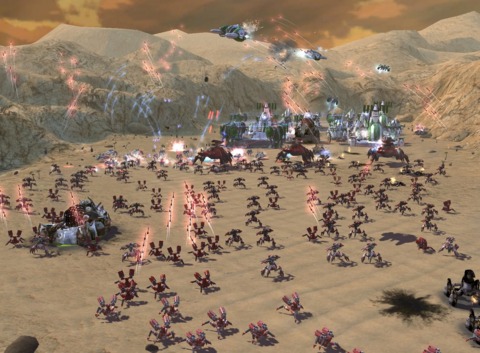
Coincidentally, the speed of the gameplay compliments the overhauled engine which powers Supreme Commander 2. The original suffered from late game slowdown on even powerful rigs and was poorly optimized for anyone who hadn’t invested heavily in their PC. In stark contrast to that unwieldiness SupCom 2 runs smoothly at high settings in all but the most severe battles and turning down some minor graphical elements will render it totally playable on older hardware. Sacrifices for an unstuttering framerate include less detailed environments and a lesser amount of polygons on units, though the entire game maintains a clean, futuristic look and the more esoteric units and huge experimentals are a delight to behold.
As a title with immense scope SupCom 2 is nearly unique in the micromanagement obsessed RTS genre and has made a concerted effort to maintain its scale while stripping out needless complexity in favour of approachable systems with considerable depth. Hardcore fans of the original may be disappointed by the simplification of a once great resource gathering system, but the more developed tech tree, improved engine performance, and faster paced gameplay rectifies it. Anyone who has ever enjoyed commanding huge armies on the battlefield or devastating an enemy with a nuclear strike should at least consider Supreme Commander 2.
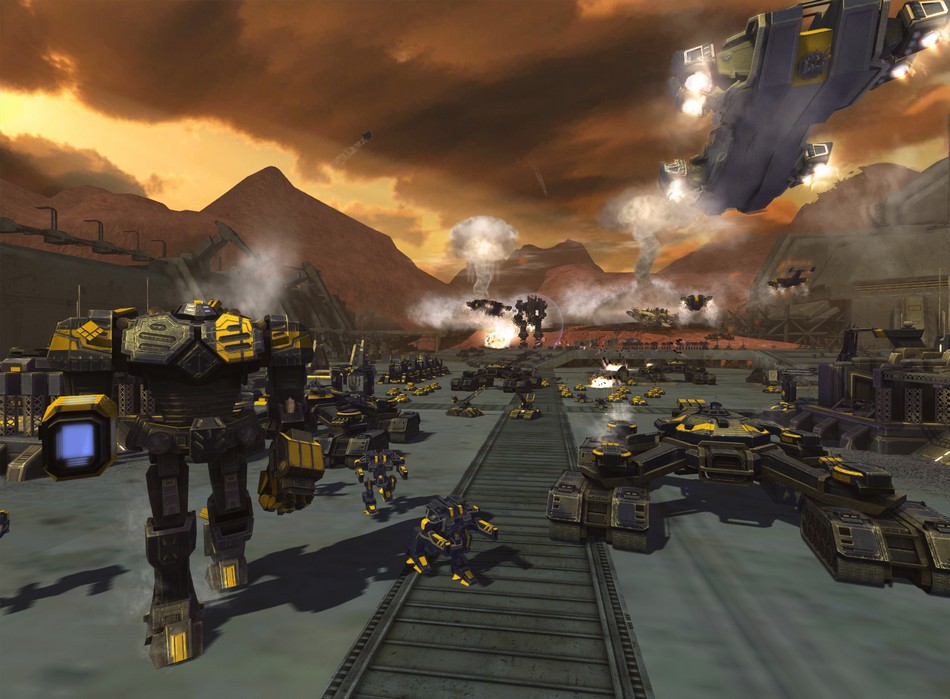
*Please note that post release Gas Powered Games has released multiple patches adding some of the server browser features mentioned in this review.
